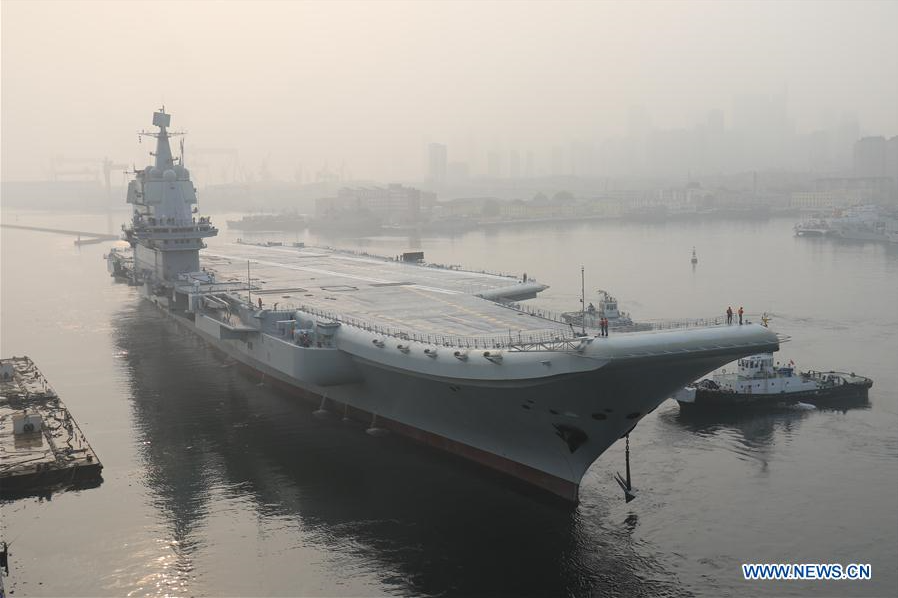
China's first home-built aircraft carrier CNS Shandong leaves Dalian in Northeast China's Liaoning province for sea trials on May 13, 2018. [Photo by Xinhua]
This is an editorial from China Daily.
Although many had predicted that CNS Shandong, the first domestically built aircraft carrier would enter service after it finished its sea trials in October, its commissioning, as China's first combat-ready aircraft carrier, is still striking the heartstrings of some.
Although it remains unknown where its home port will be, that Sanya, the southernmost port overseeing the South China Sea, was host to the commissioning ceremony on Tuesday has signaled that, with the second aircraft carrier in hand, China will have more cards to play in the waters where trouble is continually being stirred up by Western powers.
However, its practical significance should not be exaggerated. Although an upgrade on China's first aircraft carrier CNS Liaoning, the 60,000-ton Shan¬dong, which is easily distinguishable by its old-fashioned ski jump, cannot be regarded as a first-class aircraft carrier by any standard, be it design or technologies. And being conventionally powered its range and combat effectiveness are limited.
Yet despite this, it does have some import. Not least in demonstrating China's resolve to modernize its navy and its ability to quickly build up its learning curve. The ship undoubtedly serves as a link, in terms of engineering, between the Liao¬ning and the country's future nuclear-powered aircraft carriers that will use electromagnetic equipment to launch aircraft.
As arguably the youngest navy aiming to elbow into the world's first-class navy club, the Chinese People's Liberation Army Navy — which has developed from being a fleet of sampans and fishing boats on its establishment on April 23, 1949, in the Yangtze River — has become an indispensable force safeguarding the country's sovereignty and core interests, and a strategic support for the country to be transformed into a strong maritime country.
Given the Chinese navy's increasingly active role in participating in humanitarian assistance tasks, international escort missions and global peacekeeping missions, its enhanced capabilities will ensure it is better able to fulfill its missions, help the government better undertake its international responsibilities, and maintain world peace and stability. Even when China has more advanced aircraft carriers, which will only be a matter of time, they will only serve as a deterrent, helping China to better live up to its long-term tenet that all disputes are best settled by political means, not war.
There are those who view China's naval modernization as a threat, but although that modernization is unprecedented in its scale and speed, it is simply attaching long-overdue importance to managing its territorial waters and seeking to safeguard its growing overseas interests. The commissioning of the Shandong does not pose a threat to another country; instead it will help China to properly handle maritime and air situations, and resolutely respond to security threats, infringements and provocations on the sea, and help safeguard maritime peace, stability and order.

 中文
中文





